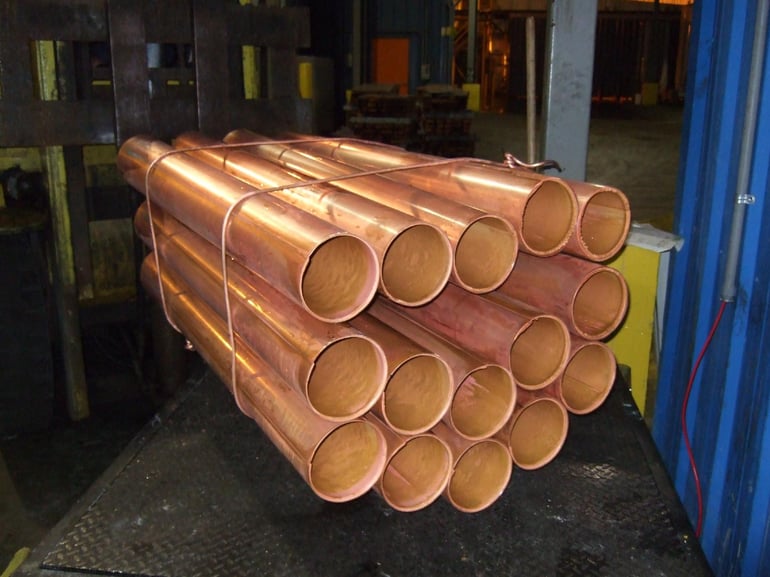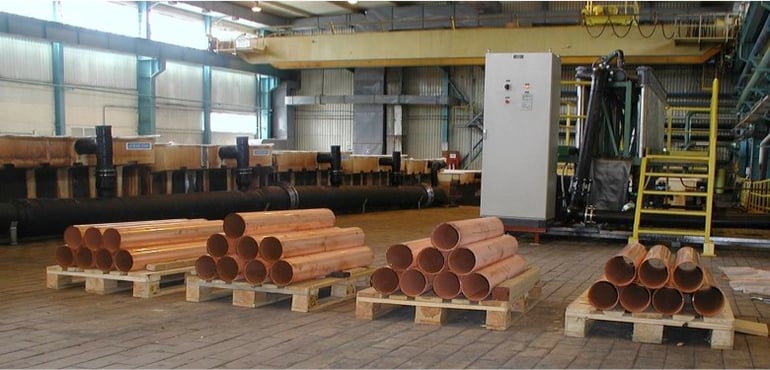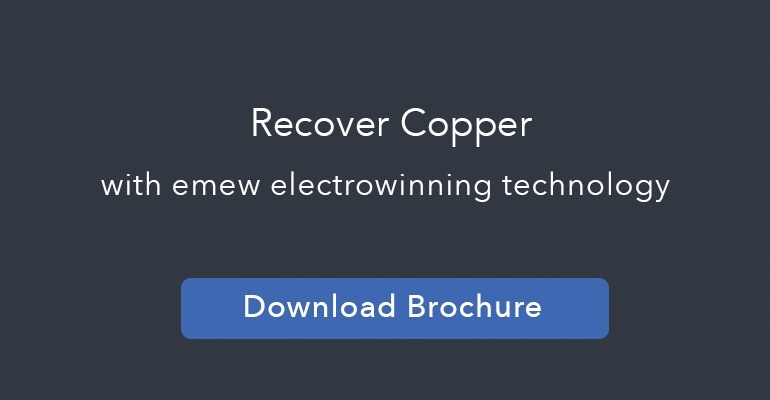The electrowinning of copper is an electrolytic process that uses electricity to recover dissolved copper from solution as
Cu2+(aq) + 2e- -->Cu(s) (E0 = +0.34V)
Copper easily dissolves in acids including sulphuric, nitric and hydrochloric. Recovering copper cathode from acidic
The introduction of emew’s vortex electrowinning technology has further pushed the boundaries and applications of copper electrowinning. Owing to its positive reduction potential (E0 = +0.34V), copper is quite willing to accept electrons when an electrical current is applied. Coupled with the intrinsic high mass transfer of emew electrowinning, recovery of high purity copper from low-concentration, mixed-metal and contaminated feeds is possible.
Let’s take a closer look at some common applications of copper electrowinning.
FREE Download - Copper Recovery Brochure
To download fill the form below
Copper electrowinning for copper refineries
Electrolytic copper refineries have an inherent need to control copper concentrations in the

Conventional copper electrowinning, although commonplace, is not efficient for the liberator process resulting in:
- Off-spec copper that has to be recycled resulting in high working capital or work in progress (WIP)
- Generation of carcinogenic acid mist and potential for lethal arsine gas
- Production of tertiary liberator sludge or liberator cake
Use of advanced copper electrowinning technologies such as
- Production of high purity saleable copper cathode down to 1 g/L Cu
- Significant reduction in working capital or WIP
- No acid mist or fugitive gases like arsine as
emew cells are completely enclosed - Better impurity control
- By-product credits from recovery of Nickel cathode
Copper refineries are taking advantage of these benefits and retrofitting conventional copper liberator cells with advanced
Copper electrowinning for nonferrous metal recycling
Metal recycling is becoming increasingly important from the perspectives of both sustainability and economics. Metal recycling uses 85% less energy per kg of copper produced compared to primary production (i.e. mining) and has less impact on the environment1. Worldwide copper recycling saves 100 million MWh of electrical energy and 40 million tonnes of CO2 annually. Secondary metal processors and recyclers are taking a lead role in turning scrap and end-of-life materials into usable metal that can be re-introduced into the supply chain.
Nonferrous metal recycling typically involves the following 5 steps:
- Collection
- Pre-processing and sorting
- Crushing and shredding
- Physical separation
- Pyro- or hydro-metallurgical processing
Depending on the recycling facility, these steps can happen all at
Selective leaching techniques can be used to separate the precious metals (gold, silver, platinum, palladium, etc) from the so-called base metals (copper, nickel, tin, etc) in the nonferrous fraction. A combination of direct electrowinning and other hydrometallurgical methods such as ion exchange (IX) and selective precipitation can then be used to separate and purify the individual metals. Copper can be directly electrowon using
Copper electrowinning for waste recovery and wastewater treatment
Most governments and their regulatory agencies have defined limits for discharge of wastes. In order to comply with these increasingly stringent discharge limits as well as self-imposed sustainability targets, many companies are implementing ‘zero discharge’ policies. This means that all wastes and wastewaters generated are either recycled internally within the operation where they are produced, or further processed to an extent that they are no longer harmful. Unfortunately, this can result in low-grade, complex by-products that are either low-value or must be disposed of by a waste contractor. By-products that are ‘low-value’ are often difficult to reprocess by conventional means and hence the options are limited.

This is where advanced technologies like
Waste residues, flue
Summary
Copper electrowinning has evolved considerably since its discovery in 1807. Today copper electrowinning is used in a variety of applications from controlling copper and impurities in a copper
References
1. European Copper Institute. (n.d.). Recycling Saves Energy and CO2. Retrieved from https://copperalliance.eu/benefits-of-copper/recycling/







